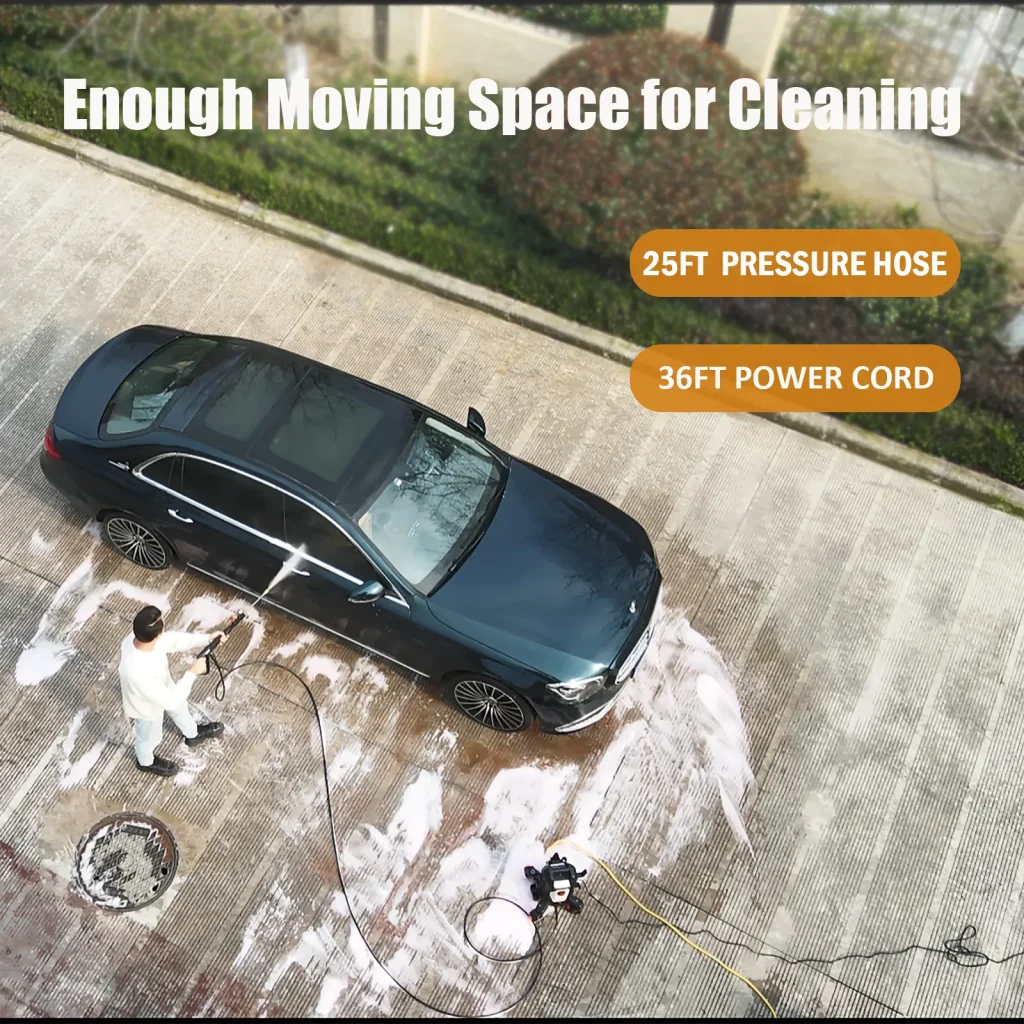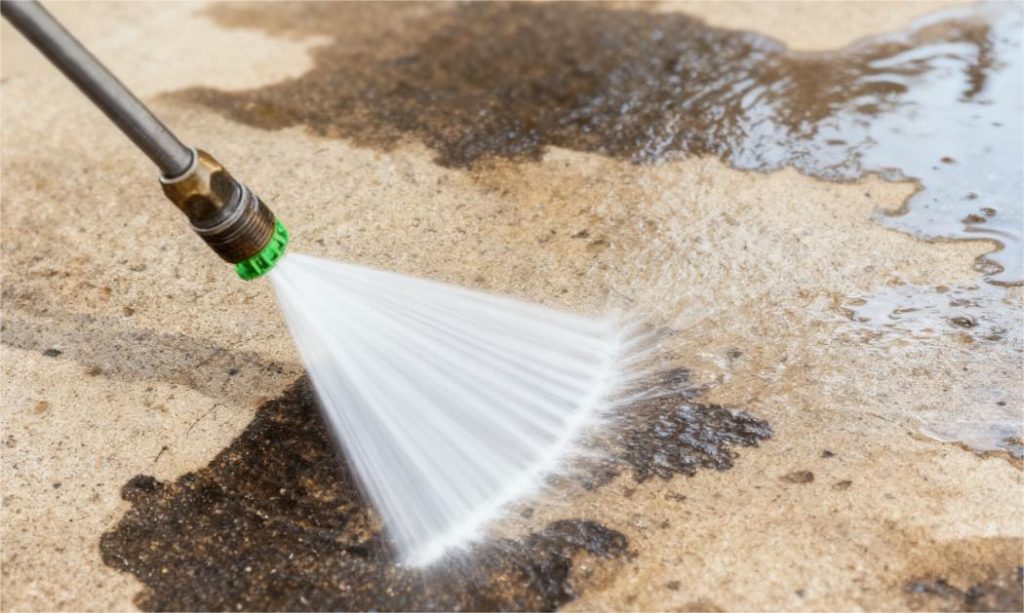What PSI Electric Pressure Washer is Best for My Use?
When shopping for an electric pressure washer, one of the first specs you’ll notice is PSI (Pounds per Square Inch). It’s often highlighted in bold on every product page—but what does it really mean? And how do you know which PSI level is best for your cleaning needs?
This blog will walk you through everything you need to know about electric pressure washer PSI, enabling you to make a smart and confident purchase.
What is PSI & Why Does It Matter?
PSI is an abbreviation for Pounds per Square Inch and is utilized to gauge the pressure of water leaving your washer’s nozzle. In simple terms, it measures how forcefully water is being sprayed.
A greater PSI means greater cleaning power—ideal for stubborn stains or hard surfaces—a lesser PSI provides gentle, controlled cleaning for softer surfaces like car paint or wood decks.
But PSI is not all. Cleaning performance also depends on GPM (Gallons per Minute)—water flow rate—multiplied (PSI × GPM) to provide you with Cleaning Units, a better measure of pressure washer efficiency.
Nonetheless, PSI is the initial measurement to take into account since it has a direct effect on how well dirt, grime, and mildew are removed from a surface.
Electric Pressure Washer PSI Ranges & Suitable Uses
Not all cleaning jobs require the same power.
The PSI (pounds per square inch) rating of an electric pressure washer determines the force with which the water jet impacts the surface—choosing the appropriate power for the cleaning task is crucial for effective cleaning without causing damage.
≈1800–2000 PSI — Light Household Cleaning
This is the ideal range for routine work that does not require forceful aggression. It’s strong enough to remove surface grime but is not tough on finishes—ideal if you’re doing most of your household cleaning.

Typical Uses
- Washing automobiles, motorcycles, and bicycles
- Rinsing outdoor furniture
- Cleaning windows or light siding
- General garden equipment and grills
This level is a great option if you want a simple, easy-to-use washer to use from time to time.
≈2000–2800 PSI — Most Everyday Needs
You’ll likely be here if you expect to clean something more than a car or patio furniture. The mid-range pressure machines give a major boost in cleaning ability and can handle tougher buildup without being overly aggressive.

Typical Uses
- Decks and wood fences (with the proper nozzle)
- Driveways and sidewalks
- Patios and brickwork
- Boats, RVs
If you’re unsure which way to go, a 2000–2500 PSI electric pressure washer is often the most flexible choice for homeowners.
≈2800–3500 PSI — Heavy Work & Stubborn Grime
Additional PSI electric units are meant for heavier work—where grime is more than skin-deep. They’re especially handy when you want deeper cleaning without having to go to a gas unit.

Typical Applications
- Stone and concrete
- Oil-stained parking lots
- Weathered brick
- Equipment and tools
As the pressure is high, it’s best to start with a wider spray pattern and spot test an out-of-sight area when dealing with softer materials.
Factors Beyond PSI You Should Consider
Whereas PSI is the initial number that comes to most minds when buying a pressure washer, it is not the only number that matters. Cleaning power is a function of how well individual parts cooperate. Understanding them will enable you to choose a machine that fits your true cleaning habits—not your dream-list requirements.
1. Water Flow (GPM)
PSI is a pressure measure, whereas GPM (Gallons per Minute) measures the quantity of water that is dispensed by the washer. Higher GPM equates to faster rinsing and higher coverage. Optimal PSI to GPM balance—often quantified as Cleaning Units (PSI × GPM)—best defines overall cleaning capacity.
2. Nozzles and Spray Patterns
Pressure application is controlled by the nozzle. Adjustable handles or swappable tips (0°, 15°, 25°, 40°) allow you to tailor the spray for every use. Spoiling power or scarifying the surface with an errant nozzle means being adaptable.

3. Portability and Ergonomics
Weight, wheel design, and hose length are a hassle until you’re rolling your washer around the lawn. A lightweight, stable design keeps you from being frustrated during prolonged cleaning sessions.
4. Durability and Safety Features
Look for features like a Total Stop System (TSS) that shuts off the motor when the trigger is released, protecting both the pump and your energy bill. A sturdy build, quality hose fittings, and a brushless motor can also extend your machine’s lifespan.
In short: PSI determines pressure, but it’s these supporting factors that determine how enjoyable—and effective—your cleaning experience will be.
To conclude
Choosing the best electric pressure washer isn’t about having the highest PSI—it’s about getting the amount that fits your requirements. Light-duty pressure should be sufficient for autos, patio furniture, and routine outdoor cleaning, while mid-range models offer the versatility most homeowners need to clean decks, siding, or driveways. For tough deposits on concrete or brick, a higher-powered model may require some labor and time out of the equation.
Of course, PSI is only half the story. Water pressure, nozzle selection, durability, and safety features all add up to a machine’s potential to perform well and be enjoyable to use. When all these come together, even more challenging cleaning jobs don’t look so bad.
If you’re exploring options and want guidance on choosing the best PSI level or model electric pressure washer for your specific needs, our team is happy to help. Reach out anytime for tailored recommendations or product details!

